Race On Sunday, Refine On Monday
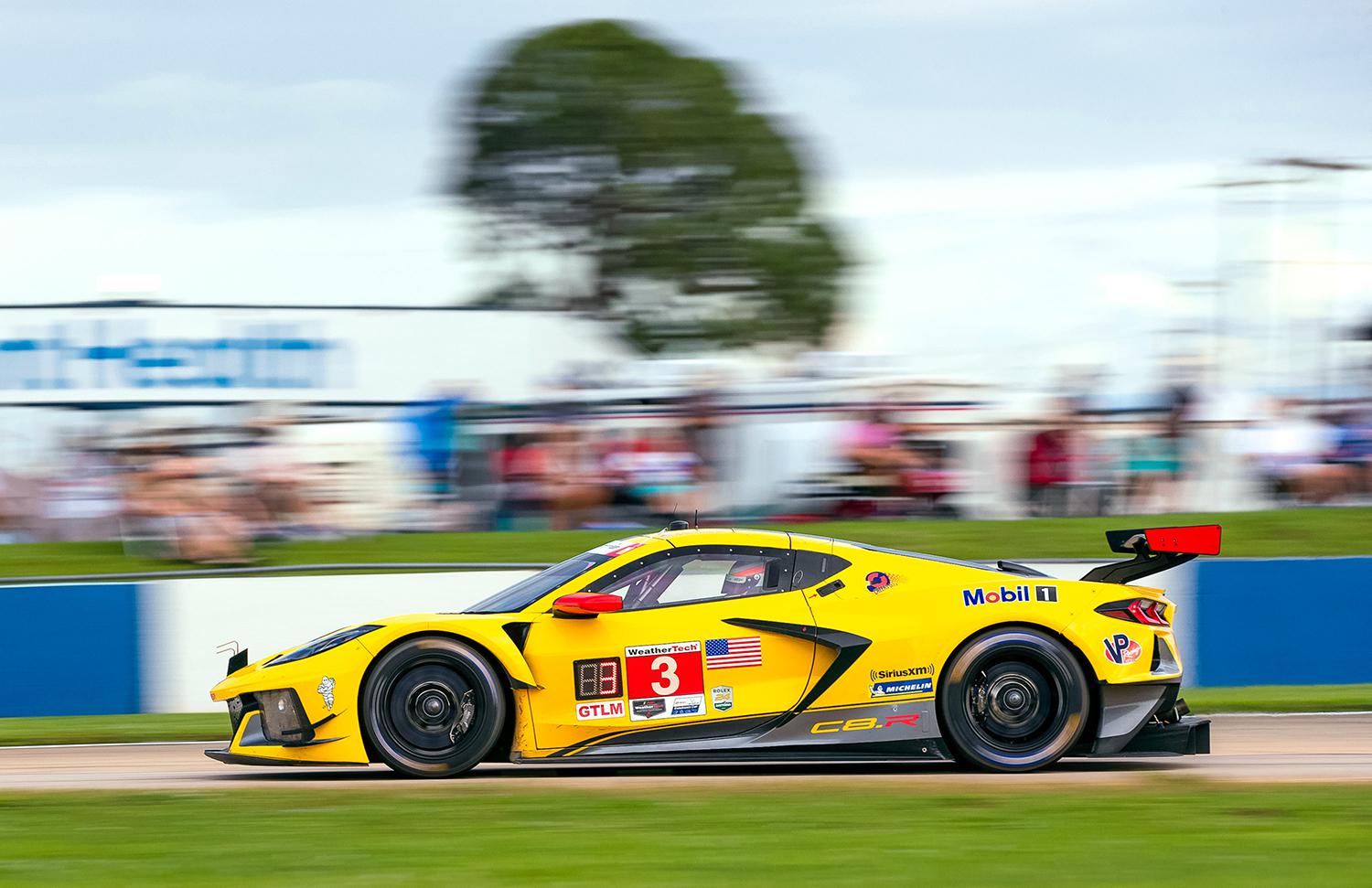
How factory road racing programs continue to drive technological innovation and brand awareness.
In the early days of the automobile, organized motorsports developed largely as a consumer-facing medium that allowed OEMs to showcase the durability of their vehicles. In the decades since, racing has expanded to include a vast array of go-fast machines that often have a tenuous connection to the street-driven vehicles that are currently rolling out of the factory. Purpose-built race cars like those found in Formula One and prototype class racing regularly showcase cutting-edge tech, but how this technology translates to a car company’s road-going fleet can be difficult to identify.
Production-based race cars on the other hand, not only present a familiar aesthetic, they often prove to be a harbinger of what’s to come, as homologation rules promote development efforts that serve a showroom-based application. With that in mind, we decided to take a closer look at the production-based racing involvement of four major automakers in order to get a better understanding of how motorsports continues to facilitate real-world innovation while also serving to advance the primary goal of these companies—selling cars.
Porsche North America
Porsche’s motorsports involvement can be traced back to the earliest days of the company as we know it today. As the story goes, Ferry Porsche, the son of company founder Ferdinand Porsche, wasn’t satisfied with the vehicles that were available in post-war Europe and decided to build one of his own. Shortly after the first car was complete, Ferry entered the lightweight, rear-engined 356 prototype into competition to use racing as a test bed for the company’s new high-performance platform.
“That’s essentially the blueprint for what we’ve done ever since,” said Dr. Daniel Armbruster of Porsche Motorsport North America, in the Los Angeles, California-based office. “The motorsport arm of Porsche is part of the research and development department, and reports to the head of R&D.”
Today, Porsche is involved at nearly every level of road racing, from track days and other HPDEs with the Porsche Owners Club to LMGTE-Pro and LMGTE-Am class racing in the FIA World Endurance Championship. In between the two extremes is Porsche’s GT Sport program, which ostensibly bridges the divide between customer and “works” motorsports.
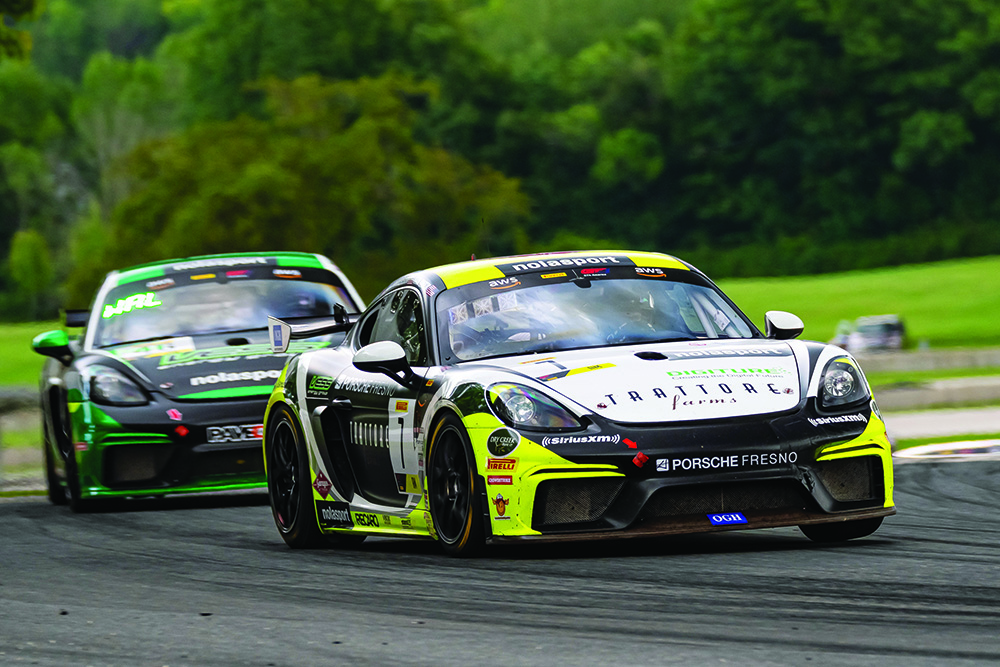
It’s here where Porsche campaigns cars like the 911 GT3 R, 911 GT2 RS Clubsport, and Cayman GT4 Clubsport in the IMSA WeatherTech SportsCar Championship and SRO GT World Challenge America. And as Armbruster noted, the connection between Porsche’s race cars and its road-going counterparts couldn’t be more direct. “The 911 GT3 R Hybrid is a great example of this. With this one-off car, we learned how to play with hybrid technology in a performance context, and that development produced the hybrid system that was used in the 918 Spyder.”
Using a prototype race car to develop the hybrid system for a limited-production hypercar might sound like an outlier case, but he also pointed out that Porsche’s most performance-focused production cars share more than a few ancillary pieces derived from the company’s racing efforts. “Vehicles in Porsche’s GT street cars, like the 911 GT2 and GT3 and Cayman GT4, are developed in the motorsports department—the race cars and the street cars are developed side by side.”
And the advances made within the motorsports department can also be seen outside of Porsche’s most hardcore street cars as well. “The double wishbone front suspension design that was developed in the top level of 911 racing, with the 911 RSR, can now be found in all 992 generation 911 street cars.”
Yet Porsche’s involvement in racing isn’t strictly an academic endeavor; Armbruster told us that competition is a core component of the company’s philosophy as a brand. “When Porsche wins, vendors win and customers win. But for us, racing is more than just engineering and marketing—the sportsmanship and spirit of how we approach it has helped to create the culture of our brand. So as long as Porsche exists, Porsches will be racing.”
Honda Racing/Acura Motorsports
Soichiro Honda saw the value of racing not only as a crucible for evaluating the durability of emerging technologies, but also as a training ground for his engineers. Honda’s initial motorsports efforts began in motorcycle racing, and before the company ever produced an automobile, the OE had already purchased the land and began development on a test track that’s known today as the Suzuka Circuit road course.
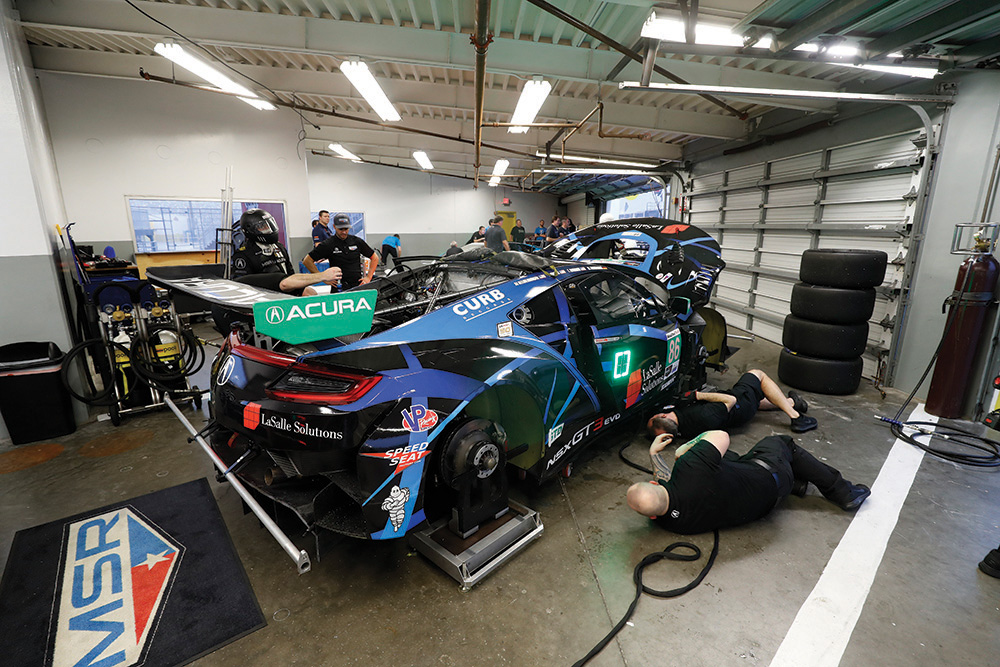
By 1964, Honda was directly involved in F1 racing, and today the company’s technology can be found across a vast swath of motorsports disciplines. The company has a long history as an engine supplier and technical partner for various series, and in 1993, Honda Performance Development (HPD) was established as technical operations hub for Honda’s American motorsports programs. Today, HPD’s support ranges from karting and SCCA club racing all the way up to IMSA and IndyCar through its Commercial and Pinnacle motorsports programs, respectively.
“Compared to any other automaker, we probably have the biggest motorsport footprint in the world,” said John Whiteman of Honda Performance Development, Santa Clarita, California. “Strictly speaking from a production standpoint, we offer everything from quarter midget and karting engines to turnkey race cars like the Civic Type R TCR and NSX GT3 Evo.”
The Civic Type R TCR currently campaigns in the Michelin Pilot Challenge, while the NSX GT3 Evo runs in the WeatherTech SportsCar Championship, both of which operate under the IMSA banner. “It’s the premier sports car series in North America and includes events like the 24 Hours of Daytona, the 12 Hours of Sebring and Petit Le Mans, so it’s an incredible testing environment for our products,” Whiteman said.
“It’s a place where manufacturers put their best foot forward,” he continued. “IMSA also has marketing appeal in terms of television coverage and things like that, but I think the biggest draw for HPD is simply the opportunity to compete with our best against the best of other manufacturers. For us, it’s about proving out the engineering and the technologies that we offer in our production cars. Racing is often said to improve the breed of the road car, and that’s certainly true at Honda. Because many of the engineers who work at HPD (including our NSX GT3 Evo and Touring Car program engineering leaders) come from Honda R&D, we have a direct link to our road car development teams. For the NSX and Civic specifically, we have shared performance, durability, and usability data from our development and competition with the minor and full-model change engineering teams in North America and Japan.”
Automobili Lamborghini S.P.A.
Although Lamborghini is a brand that’s always been synonymous with high performance, the company’s production-based racing efforts didn’t begin in earnest until 1996, when Lamborghini established a one-make racing series with the V12-powered Diablo SV-R.
After the Italian automaker was sold to the Volkswagen Group in 1998, the focus shifted over the next decade toward company growth. But by 2009, Lamborghini was once again competing in a one-make series—this time with the Gallardo—and by 2013, Lamborghini Squadra Corsa was established to support customer racing efforts. “That was a significant step for the company,” said Giorgio Sanna from the Sant’Agata Bolognese, Italy, headquarters. “It was the first customer racing department in the history of Lamborghini with a dedicated staff and a dedicated strategy. It established a long-term plan to invest in motorsport.”
For Lamborghini, the core mission sees a focus on furthering customer racing efforts rather than factory programs. “Our first priority in motorsports is to take care of our sportive customers,” Sanna explained. “We want to offer them a product portfolio and opportunities where they can enjoy our race cars. But, of course, it’s also a big opportunity to develop new technical features that can be transferred to our street-legal cars. In my opinion, the connection between Lamborghini’s race cars and our street cars is the closest in the industry.”
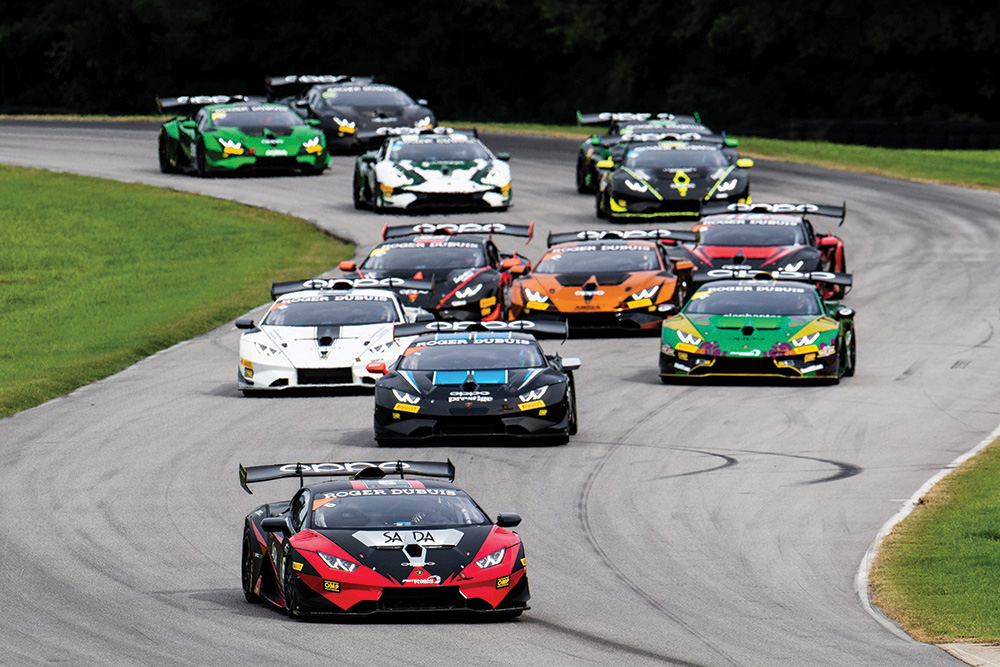
Over the past five years, Lamborghini Squadra Corse (the name of the company’s motorsports arm) has sold more than 400 race cars to customers, in turn making the department a noteworthy aspect of the automaker’s business. And that success has led to a factory racing program in IMSA, where the Huracán GT3 has secured three consecutive years of GTD class wins at the 24 Hours of Daytona in the WeatherTech SportsCar Championship series, as well as last season’s overall GTD Michelin Endurance Cup title, among numerous other victories.
And while these wins certainly bolster the brand’s performance cachet, Sanna said that motorsports development also has a direct correlation to the vehicles that Lamborghini is putting on the road today. “The Huracán Super Trofeo car, for instance, was designed to be rear-wheel drive, and we developed a dedicated rear suspension to support that. A year later, we translated that to the road car as the rear-wheel drive Huracán LP 580-2, which uses the suspension kinematics that we developed on the race car.”
And considering the potency of Lamborghini’s road-going offerings today, the context in which these road cars must provide world-class capability is not so dissimilar from their racing counterparts. “A super sports car of 20 years ago did not take aerodynamics into serious consideration—from a design point of view, the aero was for style. But if you look at the aerodynamic package of the Huracán Super Trofeo EVO, you can see how this has inspired the aero used with the Huracán STO road car to generate improvements in drag resistance while also increasing stability. Today, the performance level that these street-legal cars are capable of demands it.”
General Motors
GM’s involvement in motorsports dates back more than a century, as company founder Louis Chevrolet was a racer before operations at Chevrolet Motor Car Company began in 1911. The company designed and produced racing car parts throughout the 1910s, while Louis himself lined up at the starting grid of the Indianapolis 500 on four separate occasions. Motorsports was a family affair for the Chevrolets, too—Gaston, Louis’ younger brother, won the Indy 500 in 1920.
Chevrolet’s modern factory-level North American road racing efforts began in 1999 when it established an ongoing partnership with Pratt Miller Engineering to develop a Corvette race car that could compete in the Grand-Am and American Le Mans series. Today, both Chevrolet and Cadillac are active competitors in the IMSA WeatherTech SportsCar Championship, while Chevrolet also competes in GT4 and touring car racing in the IMSA Michelin Pilot Challenge. In its debut season, the mid-engine Chevrolet Corvette C8.R won six races and swept the GT Le Mans manufacturers, drivers, and team championships.
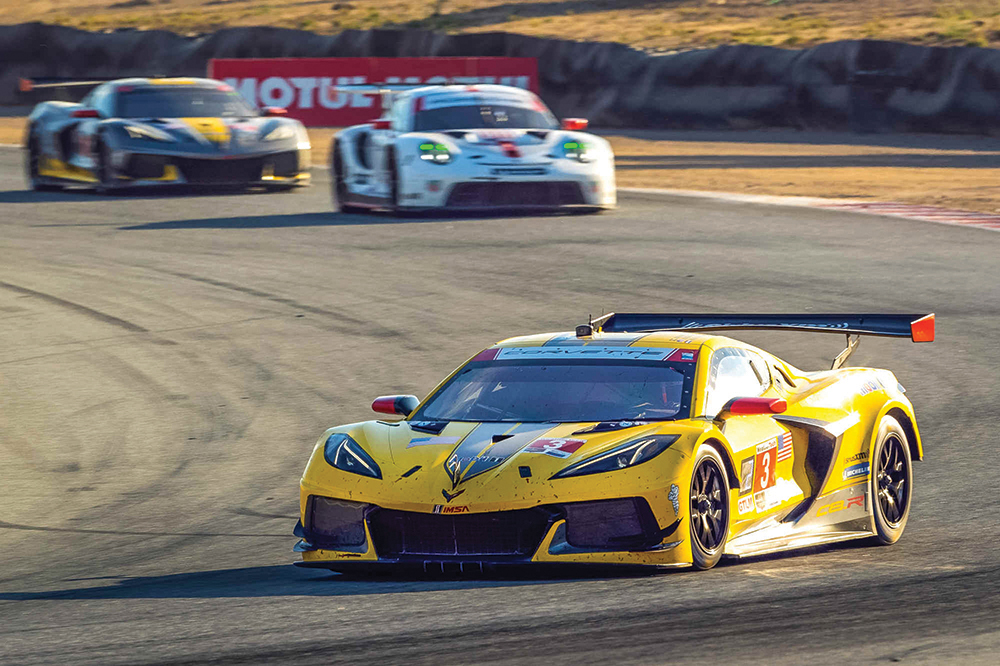
Mark Stielow of General Motors in Detroit, Michigan, said that “cascade engineering” developments from racing have long benefited next-generation production vehicles, and the transfer of technology between race cars and street cars has always been a hallmark of Corvette Racing.
“For instance, pop-up headlights were done away with on C6 generation after Corvette engineers discovered the amount of wind resistance they created on C5-R on the Mulsanne Straight at Le Mans, and the forward-tilting radiator that was introduced for the C7 Stingray used aero and air intake lessons learned from the Corvette C6.R.”
He noted that lightweight materials in suspension pieces and internal components are often vetted in motorsports before finding their way into production vehicles, along with powertrain technologies and aerodynamic improvements that enhance performance and efficiency. But he also said that GM’s significant involvement in racing isn’t sheerly for the sake of testing tech that’s destined for future production vehicles.
“It also allows for the development of future engineers who can bring experience from the world of fast-paced motorsport into production roles,” he said. “And there is, of course, a strong marketing element—racing and winning lifts the perception of Chevrolet and its racing brands, and it also has a significant influence on our highly successful performance parts and accessories business.”
SOURCES
–
General Motors
gm.com
Honda Racing/Acura Motorsports
hpd.honda.com
Lamborghini
lamborghini.com
Porsche Motorsport North America
porsche.com
 MEMBERSHIP LOGIN
MEMBERSHIP LOGIN JOIN PRI
JOIN PRI


